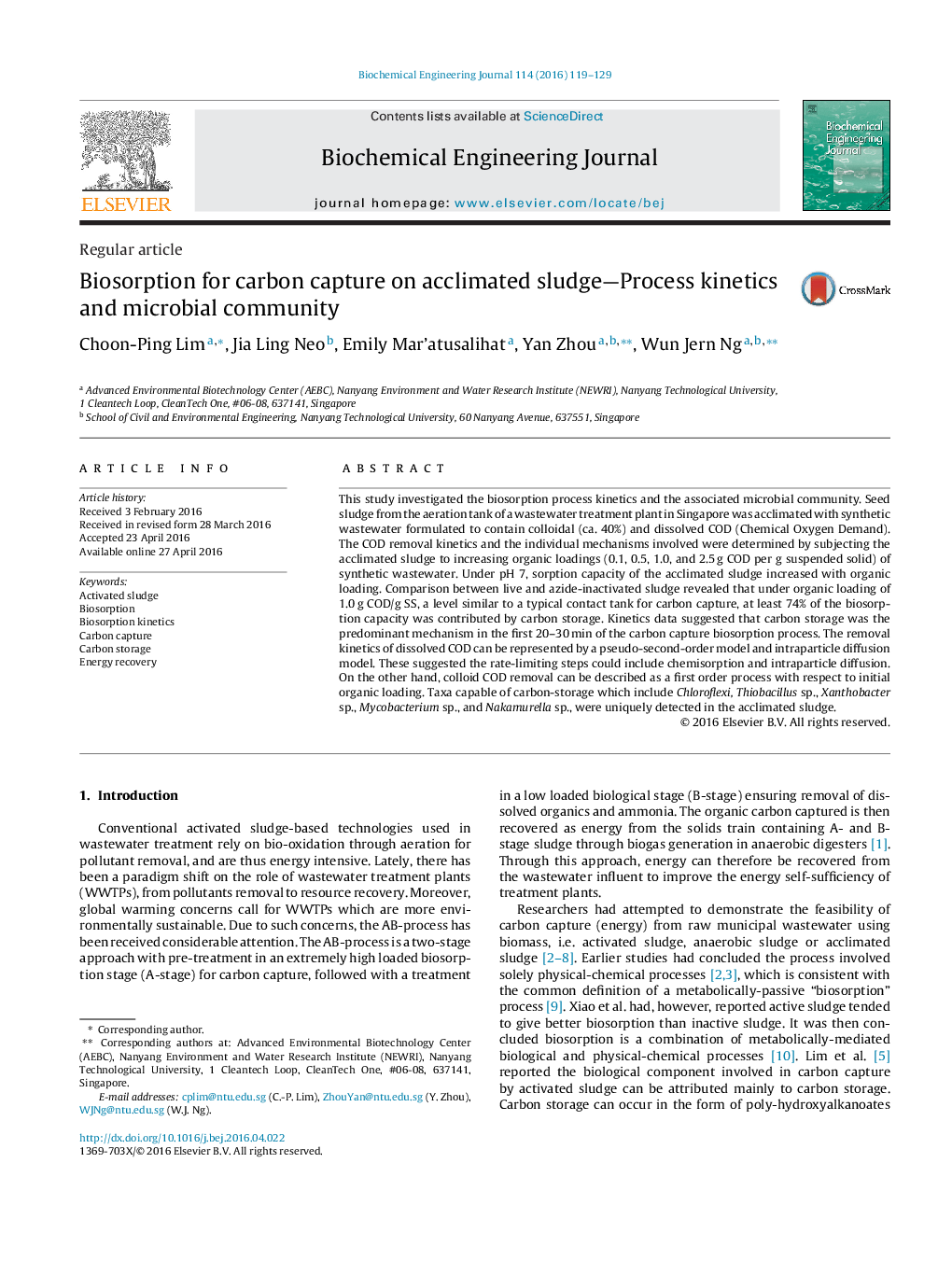| کد مقاله | کد نشریه | سال انتشار | مقاله انگلیسی | نسخه تمام متن |
|---|---|---|---|---|
| 2681 | 126 | 2016 | 11 صفحه PDF | دانلود رایگان |
• Predominant mechanism(s) involved in biosorption was investigated.
• Biosorption capacity was 250 mg COD/g SS under loadings 0.5–2.5 g COD/g SS.
• Carbon storage was the predominant mechanism in the first 20–30 min of biosorption.
• Chemisorption and intraparticle diffusion were likely the rate-limiting steps.
• Taxa capable of carbon-storage were uniquely detected in the acclimated sludge.
This study investigated the biosorption process kinetics and the associated microbial community. Seed sludge from the aeration tank of a wastewater treatment plant in Singapore was acclimated with synthetic wastewater formulated to contain colloidal (ca. 40%) and dissolved COD (Chemical Oxygen Demand). The COD removal kinetics and the individual mechanisms involved were determined by subjecting the acclimated sludge to increasing organic loadings (0.1, 0.5, 1.0, and 2.5 g COD per g suspended solid) of synthetic wastewater. Under pH 7, sorption capacity of the acclimated sludge increased with organic loading. Comparison between live and azide-inactivated sludge revealed that under organic loading of 1.0 g COD/g SS, a level similar to a typical contact tank for carbon capture, at least 74% of the biosorption capacity was contributed by carbon storage. Kinetics data suggested that carbon storage was the predominant mechanism in the first 20–30 min of the carbon capture biosorption process. The removal kinetics of dissolved COD can be represented by a pseudo-second-order model and intraparticle diffusion model. These suggested the rate-limiting steps could include chemisorption and intraparticle diffusion. On the other hand, colloid COD removal can be described as a first order process with respect to initial organic loading. Taxa capable of carbon-storage which include Chloroflexi, Thiobacillus sp., Xanthobacter sp., Mycobacterium sp., and Nakamurella sp., were uniquely detected in the acclimated sludge.
Figure optionsDownload as PowerPoint slide
Journal: Biochemical Engineering Journal - Volume 114, 15 October 2016, Pages 119–129
